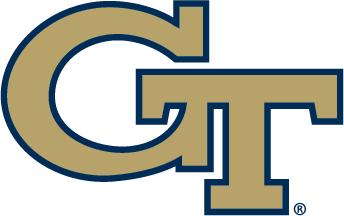Aug. 2, 2006
ATLANTA – Georgia Tech’s golf program maintained its position as one of the nation’s very best places for young golfers to continue their education and pursue their sport, ranking No. 2 in the second annual College Golf Guide published by Golf Digest magazine.
The Yellow Jackets were ranked No. 1 in the first survey published last year by the magazine, which ranks the NCAA’s best colleges for golf in its September issue (on newsstands August 8). The rankings and College Golf Guide package are meant to provide a blueprint for high school students with dreams of playing golf in college and professionally (“Golf First” ranking), as well as students focused on education who still desire to play competitive golf (“Academics First” ranking).
Tech, beginning its 12th year under current head coach Bruce Heppler, has been to the NCAA Championship 20 of the last 22 years, including the last nine straight, and has won nine Atlantic Coast Conference championships during that time.
Last year, the Yellow Jackets earned their fourth ACC crown under Heppler and captured two other tournament titles. Three Yellow Jackets were named to the Golf Coaches Association All-America team, and three were named All-America Scholars (regular players who carry a 3.2 grade-point average or higher) by the same organization.
“We’ve had a good program and a great school, and it’s nice when other recognize that,” said Heppler, whom Golf Digest called the “best young coach in college golf” last year. “The people who are compiling this have no agenda or promotional interest, so it’s an unbiased survey.”
The full college rankings, including every Division I, Division II and Division III school in the U.S. with a golf program, can be viewed here.
The extensive College Golf Guide Package – with tips for identifying the best campuses and a revealing survey of 200 college golf coaches on the student-evaluation and recruiting process – can also be viewed online.
“Our purpose with the College Golf Guide is to promote the idea of playing golf during the college years,” said Jerry Tarde, Chairman and Editor-in-Chief of Golf Digest. “Technology today has given students the ability to have complete control over the college search process, and for the 225,000 boys and girls playing high school golf, our guide offers a crash course in getting started.”
Five criteria form the basis of the rankings: a college golf team’s adjusted scoring average, player growth while on the team, academics, climate and coaches/facilities.
This year’s academics numbers come courtesy of U.S. News & World Report’s respected “America’s Best Colleges” guidebook. The climate numbers were provided by Longitudes Group and measure each school’s 30-year average of playable days from September 1 to May 31.
The player-growth category is a refinement to Golf Digest’s rankings this year and is based on two measurements: the number of players on the roster during the last four seasons who lowered their adjusted scoring average on a year-over-year basis, as well as the team’s combined improvement or decline.
UCLA took the top spot in the men’s “Golf First” ranking, being the only school to rank in the top-10 percent in three of the five categories – scoring, climate and coaches/facilities. Rounding out the top 10 are: No. 2 Georgia Tech, No. 3 Pepperdine, No. 4 Rollins, No. 5 Florida, No. 6 Wake Forest, No. 7 Southern Cal, No. 8 Stanford, No. 9 Duke and No. 10 North Carolina.
In the “Academics First” ranking, Princeton is No. 1 for both men and women, providing the best education with an opportunity to play competitive golf. On the men’s side, Division III Trinity University is the No. 2 team in “Academics First” and Yale is No. 2 among women.
In establishing the rankings, Golf Digest rated 772 NCAA men’s programs and 500 women’s programs in the five categories mentioned above, grading each category on a 100-point scale to determine overall scores:
* Team adjusted scoring average: (Golf First: 40%; Academics First: 15%). Spans last four seasons and applies the formula used by NCAA committees to select postseason teams. (Source: golfstat.com).
* Player growth: (Golf First: 19.5%; Academics First: 7%). A new judging category, player growth determines whether players on a program’s roster during the last four years lowered their adjusted scoring average on a year-to-year basis and the team’s combined improvement or decline. (Source: golfstat.com).
* Academics: (Golf First: 14%; Academics First: 58%). Overall score from U.S. News & World Report’s 2006 guidebook America’s Best Colleges. (Source: usnews.com).
* Climate: (Golf First: 12%; Academics First: 10%). A 30-year average of number of playable days between September 1-May 31. Allows for play in poor weather but not in extreme, dangerous or snow-covered conditions. (Source: Longitudes Group).
* Coaches/facilities: (Golf First: 14.5%; Academics First: 10%). Measures coaches’ experience and past performance; quality of campus-affiliated or available courses and practice facilities. (Source: Information provided by colleges and Ping American College Golf Guide.)









